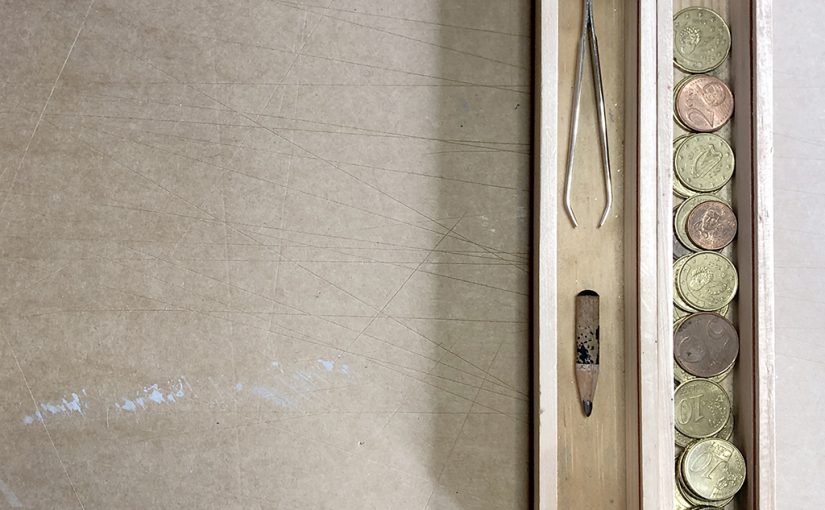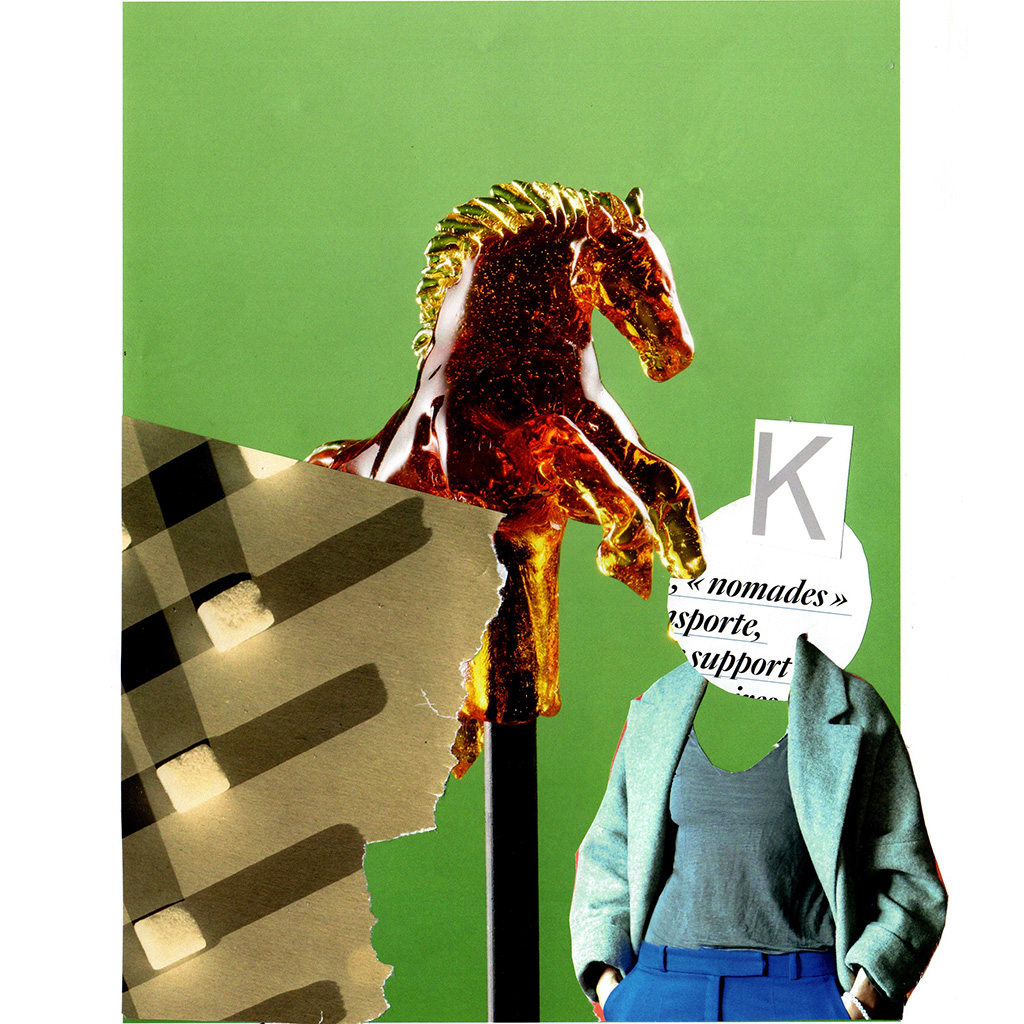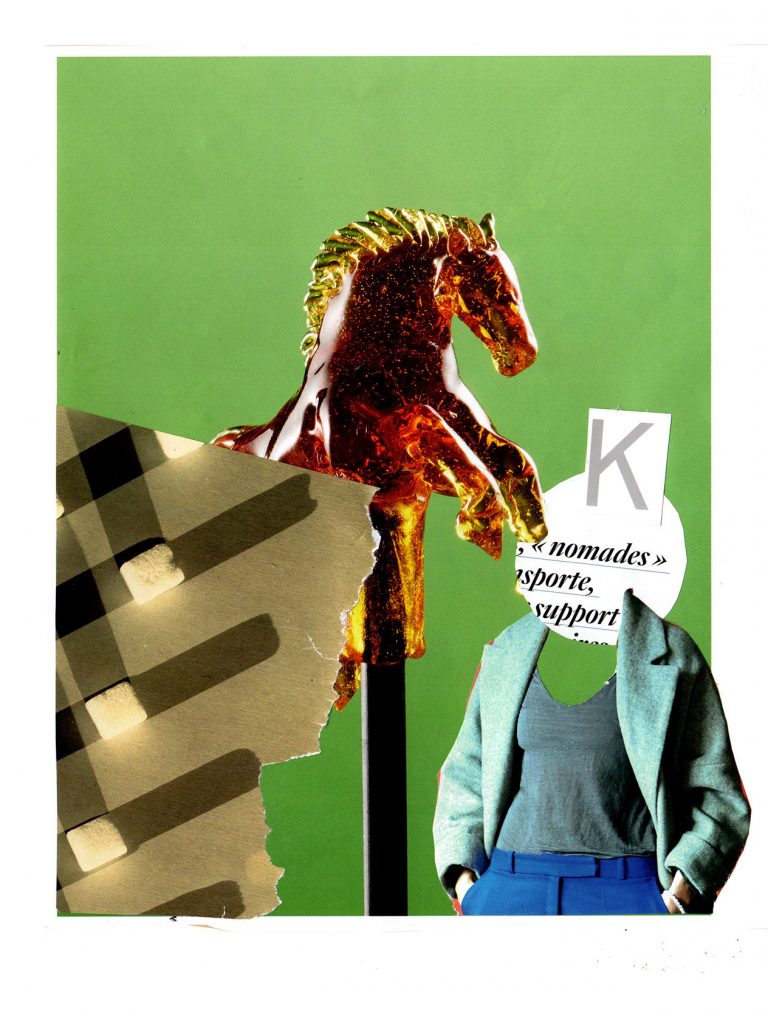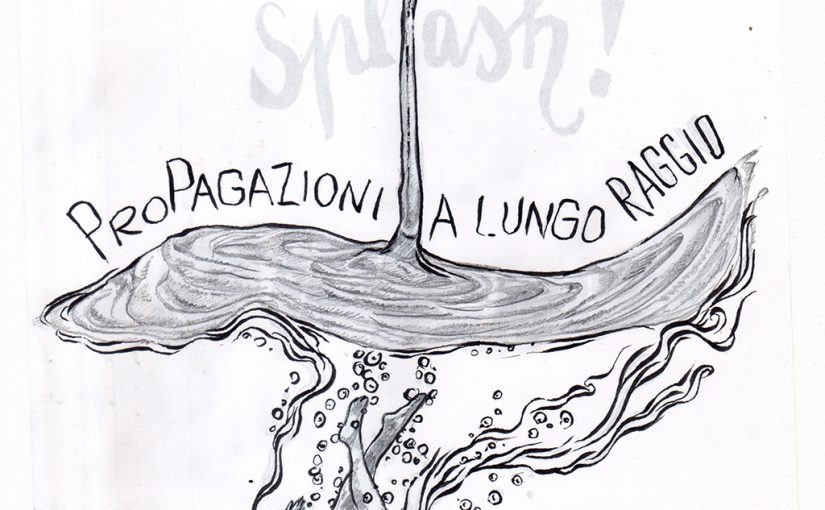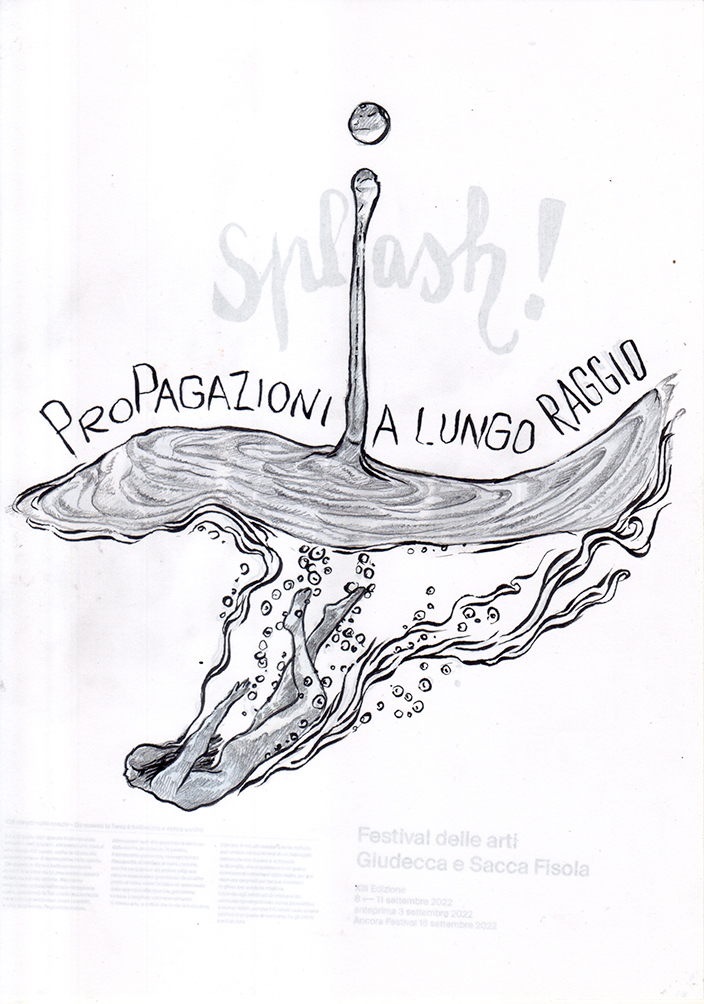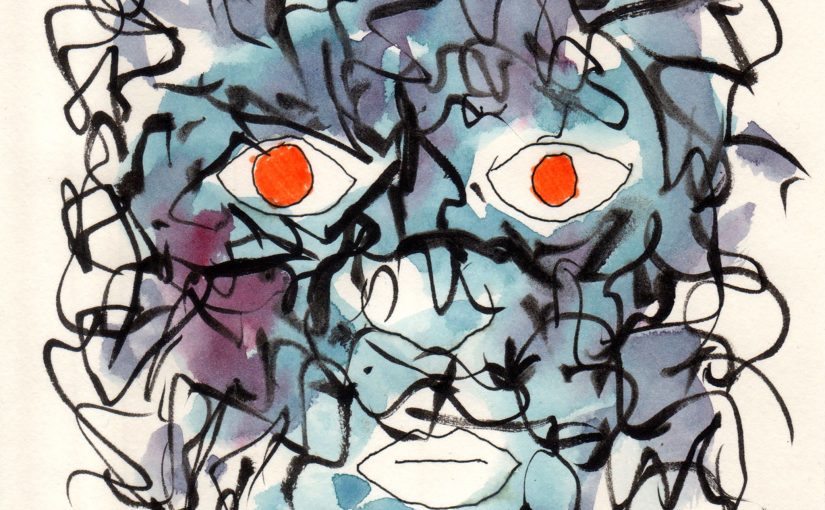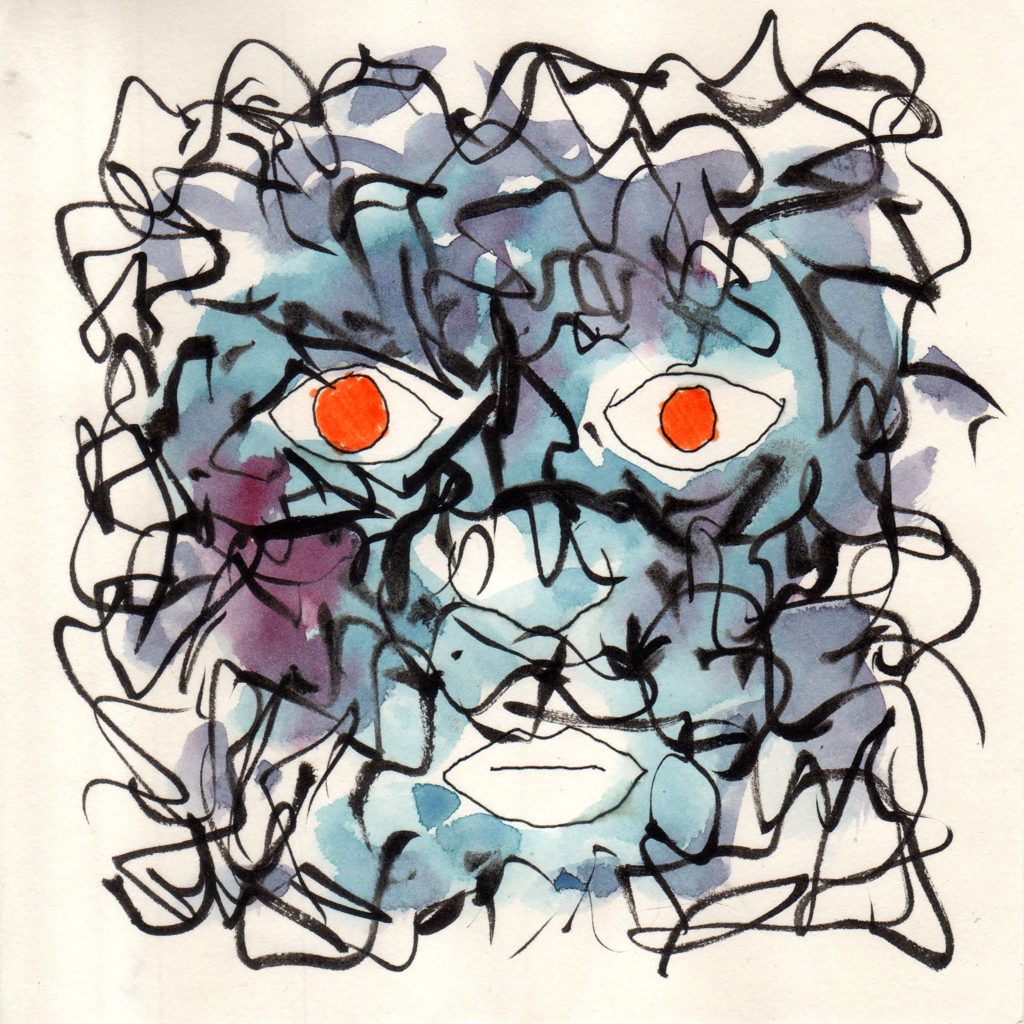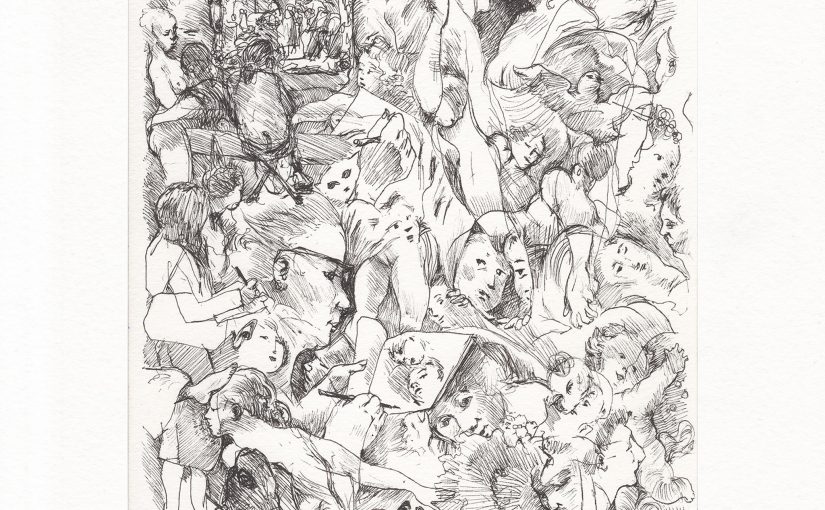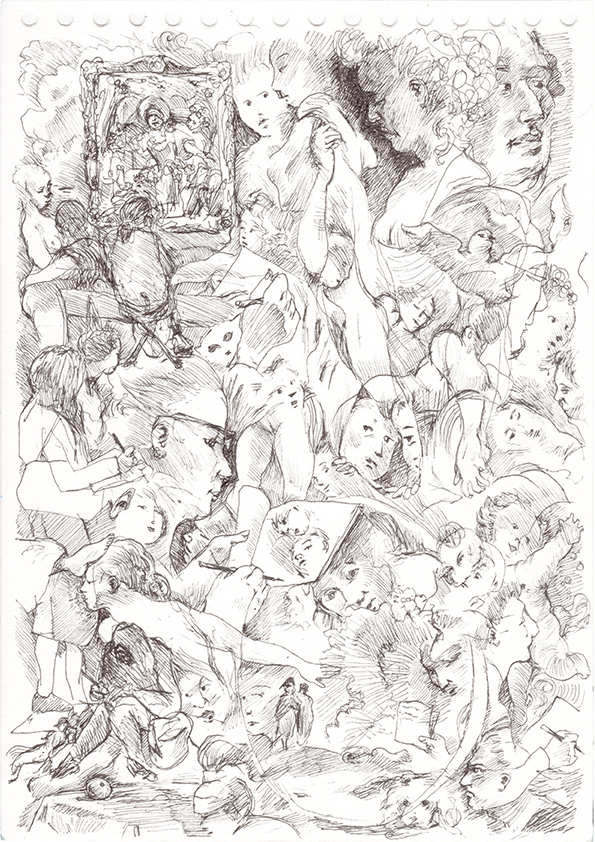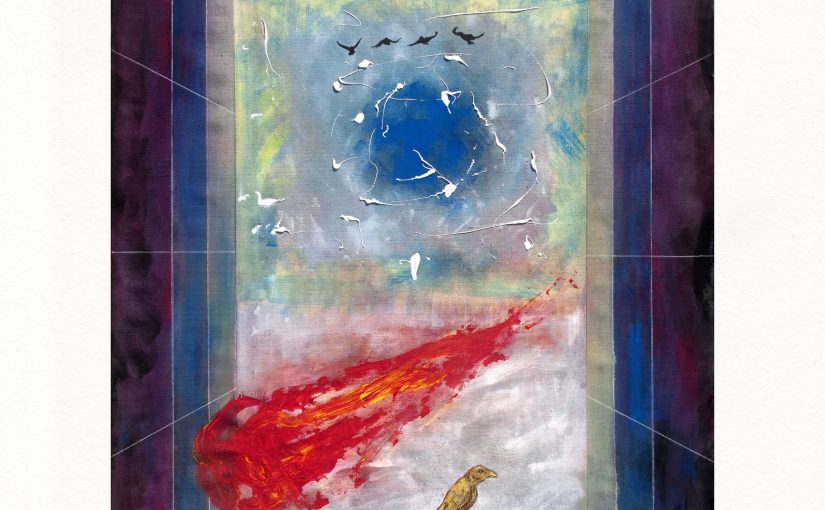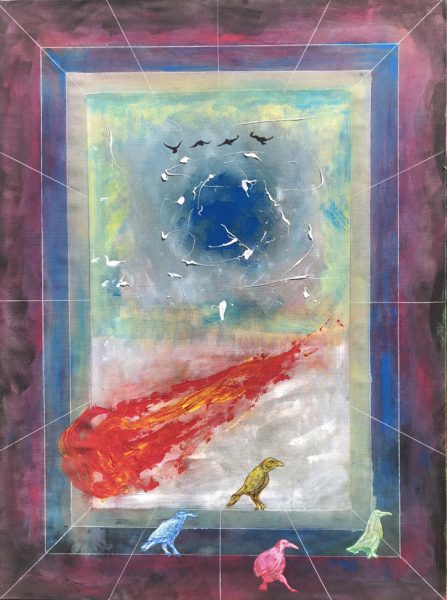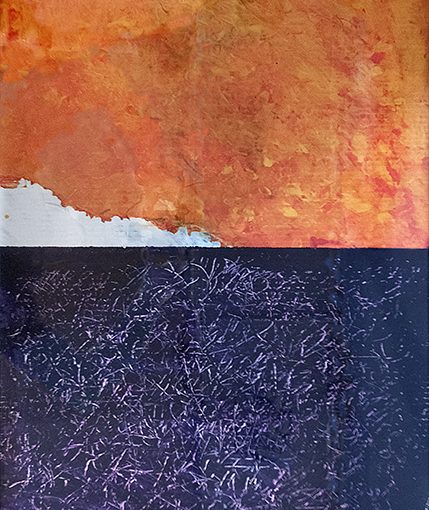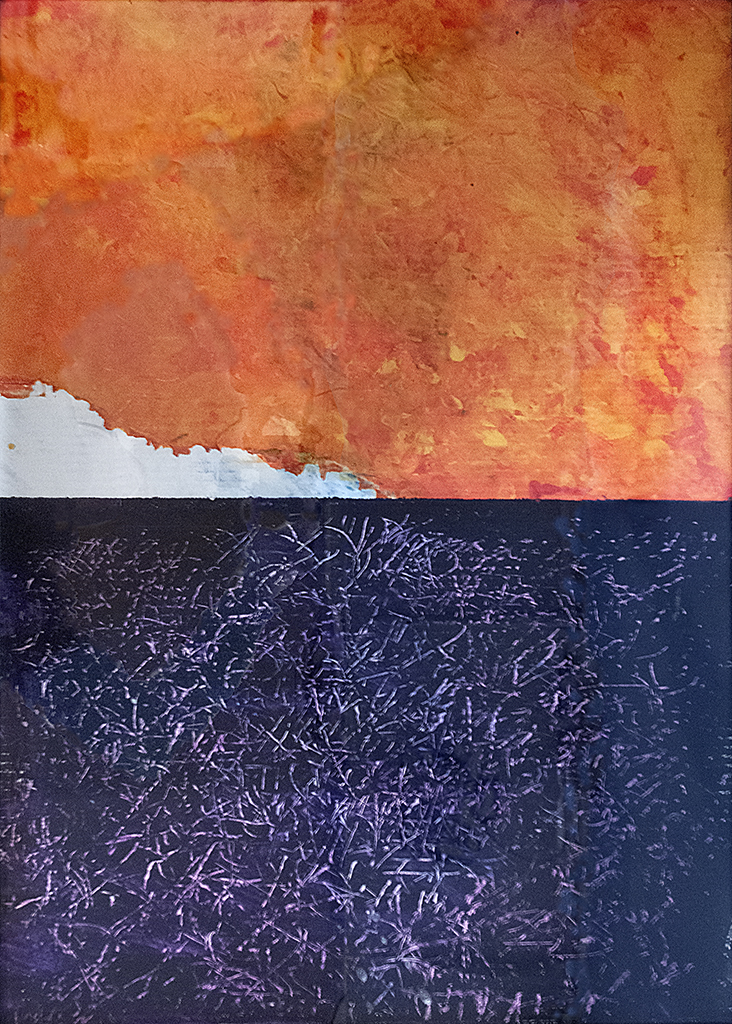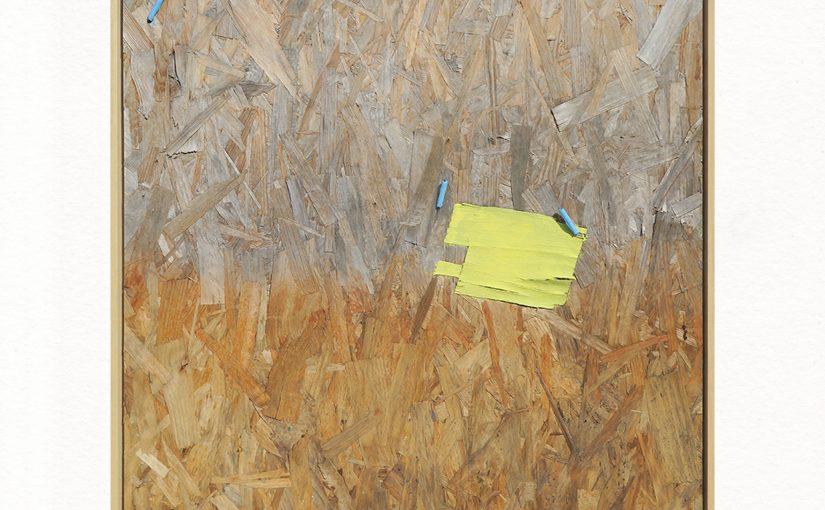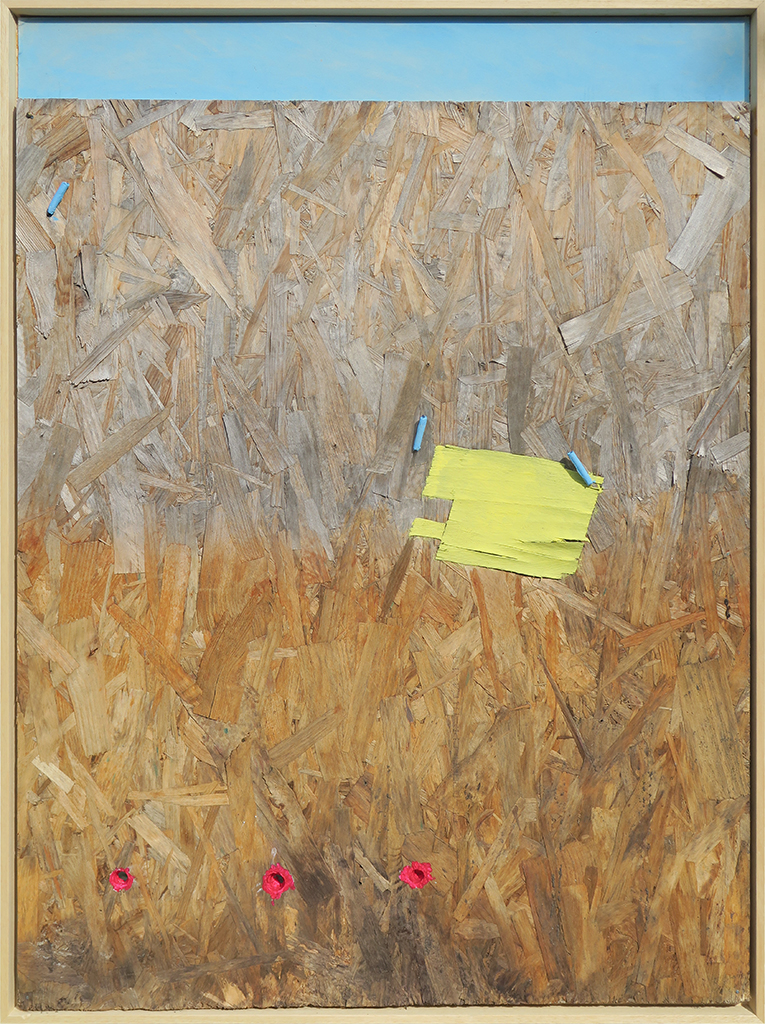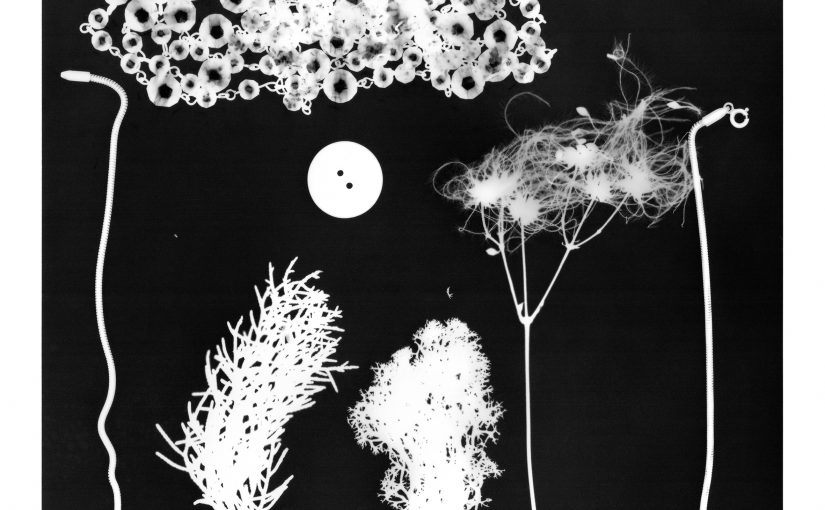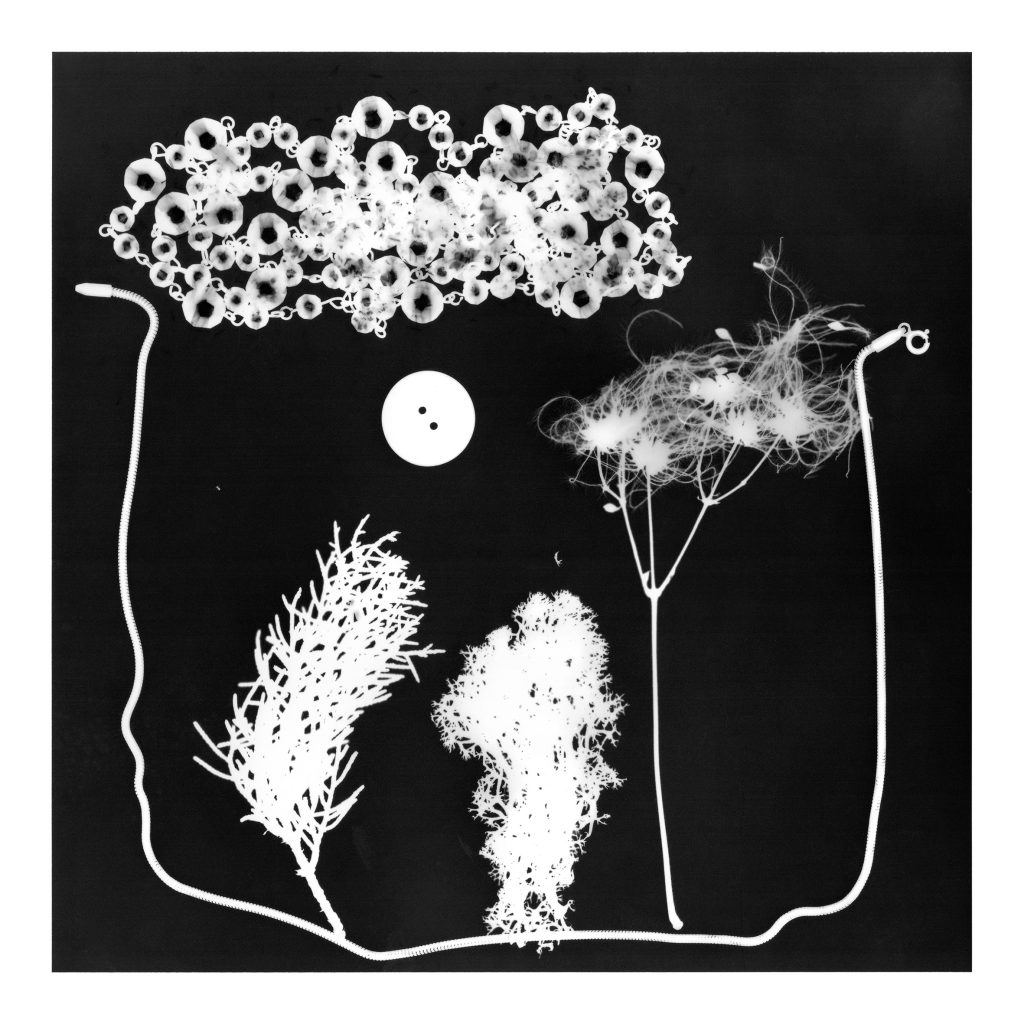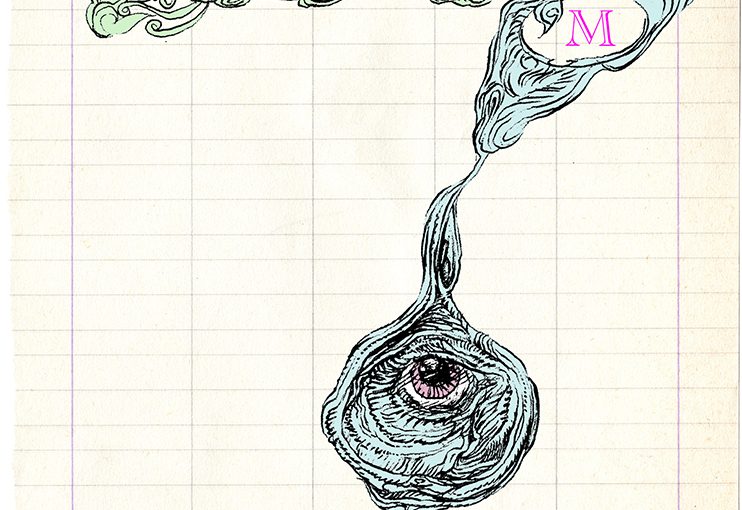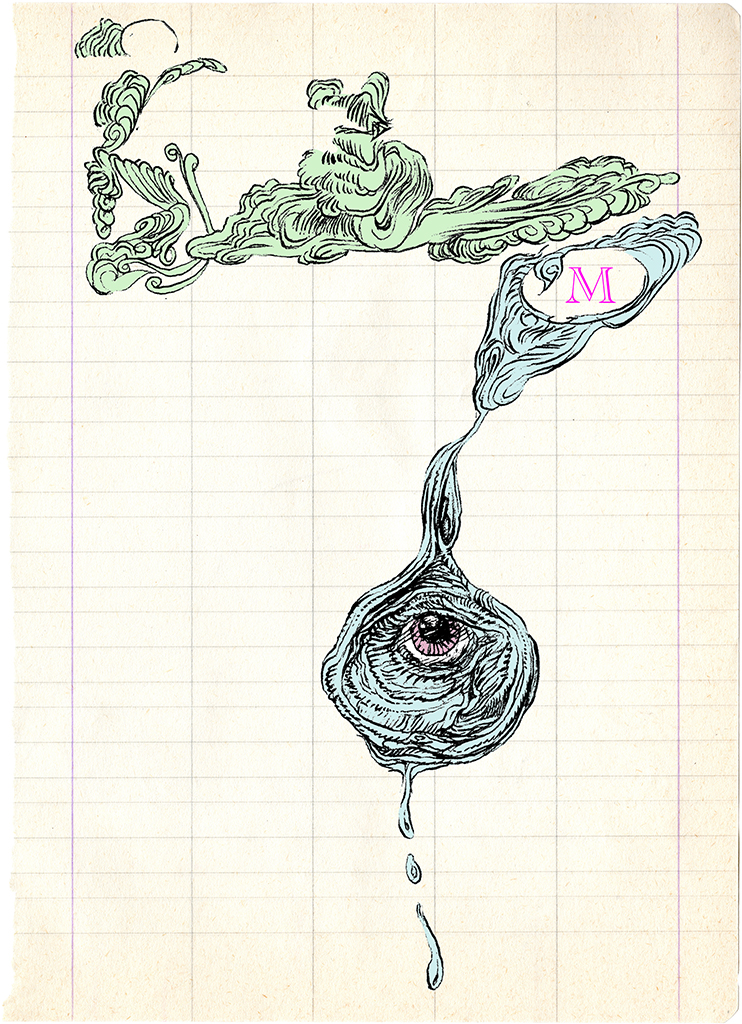
Photograph from an original assemblage created by the artist
Digital print
15 x 15 cm
on paper, signed and numbered 21 x 29.7 cm – 20 prints
2024
Objects linked to the artist’s everyday life can take on new meanings when associated with each other. The thought of war, with the fears it produces (the dropping of a bomb, the symbolism of money that nullifies people’s humanity), becomes tolerable thanks to the formal research of the image and the artist’s slow and quiet work. The bomb becomes a pencil, the artist’s peaceful and innocent tool.



